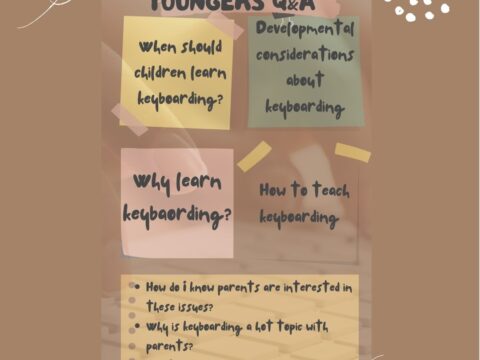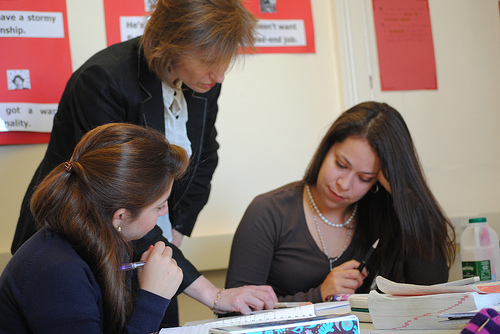Screen time for kids is a huge discussion among parents and teachers. The American Academy of Pediatrics recommends:
- Ages 0-18 months: No screen time at all, except for video chatting.
- Ages 18-24 months: One hour of high-quality, interactive screen time per day, such as educational programming or video chatting.
- Ages 2-5: One hour of screen time per day, with a focus on high-quality, interactive content.
- Ages 6-12: Two hours of screen time per day, with a focus on educational and prosocial content.
- Ages 13-18: Three hours of screen time per day, with a focus on educational and prosocial content.
But other experts vary considerably in their recommendations. In the end, it’s up to parents to make those decisions, based on what’s right for their child. Here are the critical factors to consider when making those decisions:
How Much Screen Time is Okay for Kids on the Evenings and Weekends?
In today’s fast-paced world, modern-day kids have unprecedented access to electronic devices that can serve as valuable tools in their learning journey. However, despite the numerous benefits these devices offer, it’s important to acknowledge the potential negative consequences of their excessive use.
As such, parents should be mindful of regulating their child’s screen time, especially during evenings and weekends, to ensure their overall well-being and balance between digital engagement and other aspects of life. In this article, we’ll explore the effects of too much screen time as well as the best ways to regulate screen time, especially during weekends and holidays.
Understanding the Effects of Excessive Screen Time on Kids
Overindulgence in screen time can have severe consequences on a child’s overall well-being.
Not only can it lead to a sedentary lifestyle, but it also affects their cognitive, social, and emotional development. For instance, excessive screen time has been linked to sleep disturbances; staring at screens before bed can disrupt the body’s natural sleep patterns due to the exposure to blue light that suppresses melatonin production. This lack of quality sleep may result in decreased attention span and impaired learning during daytime hours.
Furthermore, spending too much time indoors with electronic devices can potentially lead to physical health problems such as obesity, eye strain, or posture issues due to insufficient physical activity and outdoor play. Socially and emotionally, children who are constantly glued to screens might miss out on valuable opportunities for human interaction and real-life experiences. This limited engagement with others could affect their ability to build relationships or develop essential communication skills.
As a parent, it is important to understand these effects and identify the best times for your child to use electronic devices or engage in other activities. That way, you will encourage healthy habits and promote optimal wellness for your kids amidst our technology-driven world.
Distinguishing Between Learning Time and Playing Time
In the quest to balance screen time for your kids, it is essential to differentiate between learning time and playing time. While both can involve using electronic devices, they serve different purposes in a child’s development.
Learning time involves engaging with educational tools or resources such as e-books, instructional videos, or applications focused on teaching new skills or concepts. This type of screen time is generally more productive and can complement traditional learning methods. Ideally, choose high-quality, age-appropriate content that aligns with your child’s academic goals or interests to optimize learning time.
On the other hand, playing time predominantly includes leisure-oriented activities like watching shows, movies, or playing video games that primarily offer entertainment value. These activities may still carry some educational benefits; however, it is crucial not to mistake them for formal learning experiences.
The good news is that you can find helpful solutions such as carrotsandcake.com, a screen time app for kids, to help you monitor and manage your child’s screen usage. Such apps enable parents and children to collaboratively set goals for screen time based on both learning and playing activities. This encourages healthy habits and helps establish boundaries while permitting some flexibility.
Regulating Screen Time During Weekdays, Evenings, and Weekends
Effectively regulating your child’s screen time depends on setting appropriate limits that take into account their daily activities. During weekdays, it might be slightly easier to keep track of their usage due to a structured schedule involving school, homework, and extracurricular activities. The challenge is achieving this balance during evenings and weekends when routines may differ.
An excellent way to approach this is to establish a weekday evening routine that includes a designated amount of screen time for relaxation after completing homework or studying. This can allow children the opportunity to unwind while still maintaining some control over their usage.
For weekends, consider setting accumulated time limits rather than strict hourly restrictions. Allowing kids more flexibility during this period encourages them to better manage their own screen time usage. Given the longer duration of weekend days compared to weekday evenings, you can permit additional hours according to your child’s age and interests.
Additionally, promote family involvement in planning weekend activities by discussing ideas for offline entertainment and bonding experiences that do not involve screens. Suggest activities like board games, outdoor sports, or nature explorations as alternatives that still provide fun and engaging experiences without the need for electronic devices.
That way, your child will develop a healthier relationship with technology and reap the benefits of electronic devices without sacrificing other essential aspects of their well-being.
Conclusion
Electronic devices have undoubtedly become invaluable tools that contribute significantly to our children’s learning experiences and entertainment. However, it is crucial for parents to recognize the importance of regulating screen time while encouraging their kids to engage in alternative activities that promote well-rounded development.
By establishing guidelines and promoting a healthy balance between technology usage and other aspects of life, you can ensure that your kids reap the benefits these devices offer without compromising their physical, social, or emotional well-being. Remember, fostering an environment where children learn self-regulation and take responsibility for their own engagement with devices paves the way for a more successful and healthier future.
–Photo by Emily Wade on Unsplash
Here’s the sign-up link if the image above doesn’t work:
https://forms.aweber.com/form/07/1910174607.htm
Jacqui Murray has been teaching K-18 technology for 30 years. She is the editor/author of over a hundred tech ed resources including a K-12 technology curriculum, K-8 keyboard curriculum, K-8 Digital Citizenship curriculum. She is an adjunct professor in tech ed, Master Teacher, webmaster for four blogs, an Amazon Vine Voice, CSTA presentation reviewer, freelance journalist on tech ed topics, contributor to NEA Today, and author of the tech thrillers, To Hunt a Sub and Twenty-four Days. You can find her resources at Structured Learning.






































“I found the writing style to be engaging and easy to follow. It kept me interested throughout.”